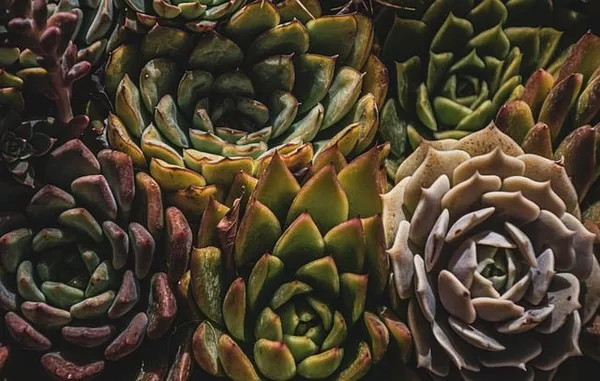Indoor succulents have gained immense popularity as low-maintenance and visually appealing houseplants. These hardy plants are known for their ability to store water in their leaves, stems, and roots, making them well-suited for various indoor environments. Proper watering is a crucial aspect of indoor succulent care, as it directly impacts their growth and overall health. In this guide, we’ll delve into the key factors that determine how often you should water your indoor succulents to ensure their thriving beauty.
Understand the Watering Basics:
When it comes to indoor succulent care, mastering the fundamentals of watering is essential. Succulents thrive in well-draining soil that prevents water from pooling around their roots. Overwatering is a common mistake that can lead to root rot and other issues. Before diving into a specific watering schedule, it’s crucial to understand the type of succulent you’re caring for and its unique water requirements.
Factors Influencing Watering Frequency:
Several factors contribute to determining how often you should water your indoor succulents:
A. Light Conditions:
The amount of light your succulents receive plays a pivotal role in their water needs. Succulents exposed to bright, indirect sunlight require more frequent watering than those placed in lower light conditions. Evaluate the light levels in your indoor space to adjust your watering routine accordingly.
B. Temperature and Humidity:
Succulents’ water requirements vary with temperature and humidity. Warmer and drier environments demand more frequent watering, while cooler and more humid conditions may allow for longer intervals between waterings. Monitor the indoor climate and adapt your watering schedule as needed.
C. Seasonal Changes:
Succulents’ water needs fluctuate with the changing seasons. They typically enter a period of dormancy during the winter months, requiring less water. As spring and summer approach, succulents become more active and may demand increased watering. Be attuned to these seasonal shifts when establishing your watering routine.
Establishing a Watering Schedule:
While each succulent has its own preferences, a general guideline for establishing a watering schedule is as follows:
A. Allow Soil to Dry:
Before watering your indoor succulents, ensure that the soil has completely dried out from the previous watering. Stick your finger into the soil about an inch deep – if it feels dry, it’s time to water. Avoid a set calendar schedule and instead let the plant’s needs dictate when it’s time for hydration.
B. Watering Techniques:
When watering indoor succulents, opt for a thorough yet controlled approach. Water the plant until you see excess moisture draining from the bottom of the pot. Discard any accumulated water to prevent root rot. Always use a pot with drainage holes to prevent water from pooling.
C. Consider the Container:
The type of container you choose can impact how often you need to water your indoor succulents. Clay pots tend to absorb moisture from the soil, potentially drying out the plant faster. On the other hand, plastic or glazed ceramic pots retain moisture better and may require less frequent watering.
Signs of Overwatering and Underwatering:
To maintain the health of your indoor succulents, it’s essential to recognize the signs of overwatering and underwatering:
A. Overwatering:
Yellowing or translucent leaves
Soft or mushy leaves
Foul odor from the soil
Slow growth or lack of new growth
B. Underwatering:
Wrinkled or shriveled leaves
Leaves becoming brittle and dry
Premature leaf drop
Stunted growth
Adapting the Watering Routine:
As your indoor succulents grow and acclimate to their environment, their water needs may change. Regularly assess the condition of your plants and make adjustments to your watering routine accordingly. Keep track of environmental changes, growth patterns, and any signs of stress in your succulents.
Conclusion:
Mastering the art of watering indoor succulents is a vital aspect of successful plant care. By understanding the factors that influence watering frequency and learning to read your plants’ cues, you can provide your indoor succulents with the ideal moisture balance for their health and vibrancy. Remember, there’s no one-size-fits-all approach – adapt your watering routine based on your succulents’ specific requirements and watch as they flourish in your indoor space.


